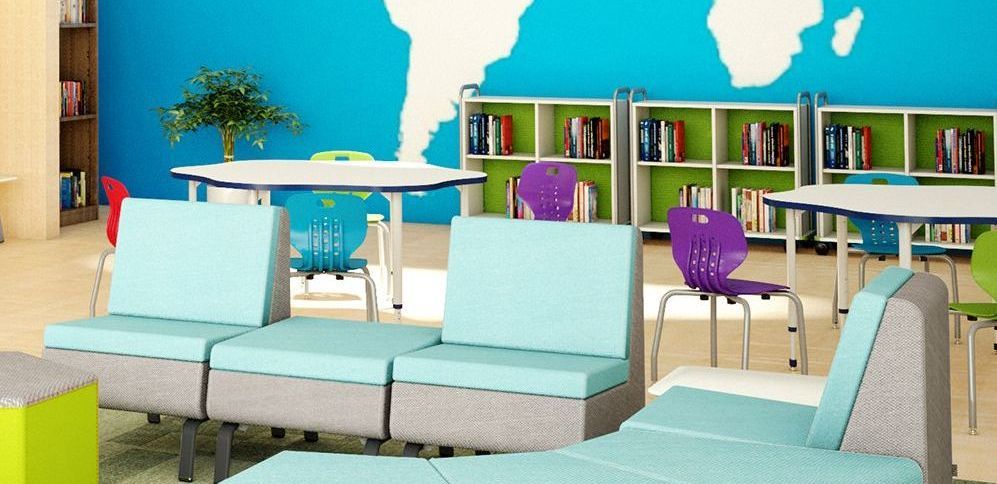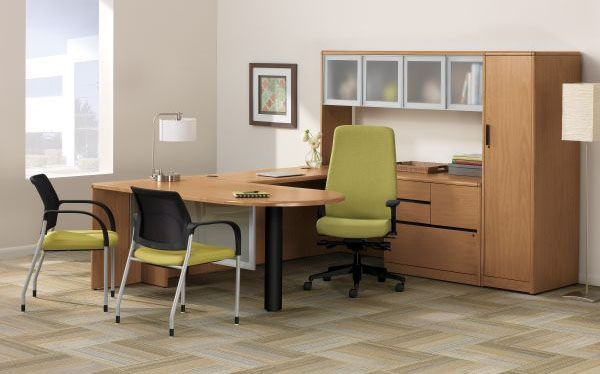Top Five Design Must-Haves for School Libraries
Today’s school libraries are evolving from quiet reading rooms into dynamic, multifunctional learning hubs. They're no longer just places for books—they're where students research, collaborate, create, and connect. Whether you're reimagining an elementary school media center or designing a high school library from the ground up, thoughtful design is key to building a space that supports modern education.
Here are five essential strategies for designing a school library that inspires curiosity and adapts to a variety of learning styles.

1. A Blend of Quiet and Collaborative Zones
Students need both focused solitude and energetic collaboration—and the right library layout makes room for both.
- Create
quiet corners or reading nooks with soft seating, privacy screens, or low bookshelves.
- Include
open, flexible group areas where students can collaborate on projects or participate in guided instruction.
- Use
zoning strategies, like area rugs or subtle changes in lighting, to signal different types of activity.
According to the American Library Association, student-centered libraries that support both independent and group learning see increased use and satisfaction.
2. Tech-Integrated Furniture and Areas
Modern libraries support not just reading—but researching, producing, and presenting. Technology integration ensures that students have the tools they need at their fingertips.
- Choose
tables and desks with built-in power and USB outlets so students can charge devices while they work.
- Provide
computer workstations or media desks for digital assignments and virtual learning.
- Use
mobile whiteboards, projection zones, or display screens for instruction and sharing.
The School Library Journal reports that 94% of librarians cite access to digital tools as crucial for 21st-century learning—so designing for tech is a must.
3. Flexible Shelving for a Flexible Future
Gone are the days of heavy, fixed library stacks. Today’s school libraries need shelving that moves and adapts as collections evolve.
- Use
mobile, locking shelving units that can be rearranged for events or growth.
- Choose
height-appropriate shelving for different grade levels, with clear sight lines.
- Leave room for
makerspace materials or rotating collections, not just books.
Flexible shelving allows you to reconfigure your space as curriculum needs shift—without costly renovations.
4. Comfortable Seating Choices
A successful library invites students to linger. That means a variety of seating types to accommodate different needs and age groups.
- Include
soft lounge chairs, beanbags, and floor cushions for casual reading or relaxation.
- Provide
task chairs and study carrels for focused research or writing.
- Use
movable stools or benches in collaboration zones that can be easily rearranged.
According to research by Steelcase, students in spaces with choice-based seating reported higher satisfaction and focus throughout the school day.
5. Creative Displays and Signage
Engaging visuals can transform a library from a storage space into an experience. Showcase student work, highlight new books, and create visual pathways to promote literacy and exploration.
- Incorporate
custom signage that’s age-appropriate and visually intuitive.
- Use
rotating display areas for seasonal books, themes, or student projects.
- Add
interactive bulletin boards or book recommendation walls to spark peer sharing.
Strategic displays not only encourage browsing—they help reinforce your school’s culture of learning and creativity.
Final Thoughts
Today’s school libraries are more than a place to check out books—they’re where ideas begin. With flexible furniture, tech-ready areas, and creative design touches, your library can become the heart of the school. One that welcomes every student, fuels curiosity, and evolves with the times.



